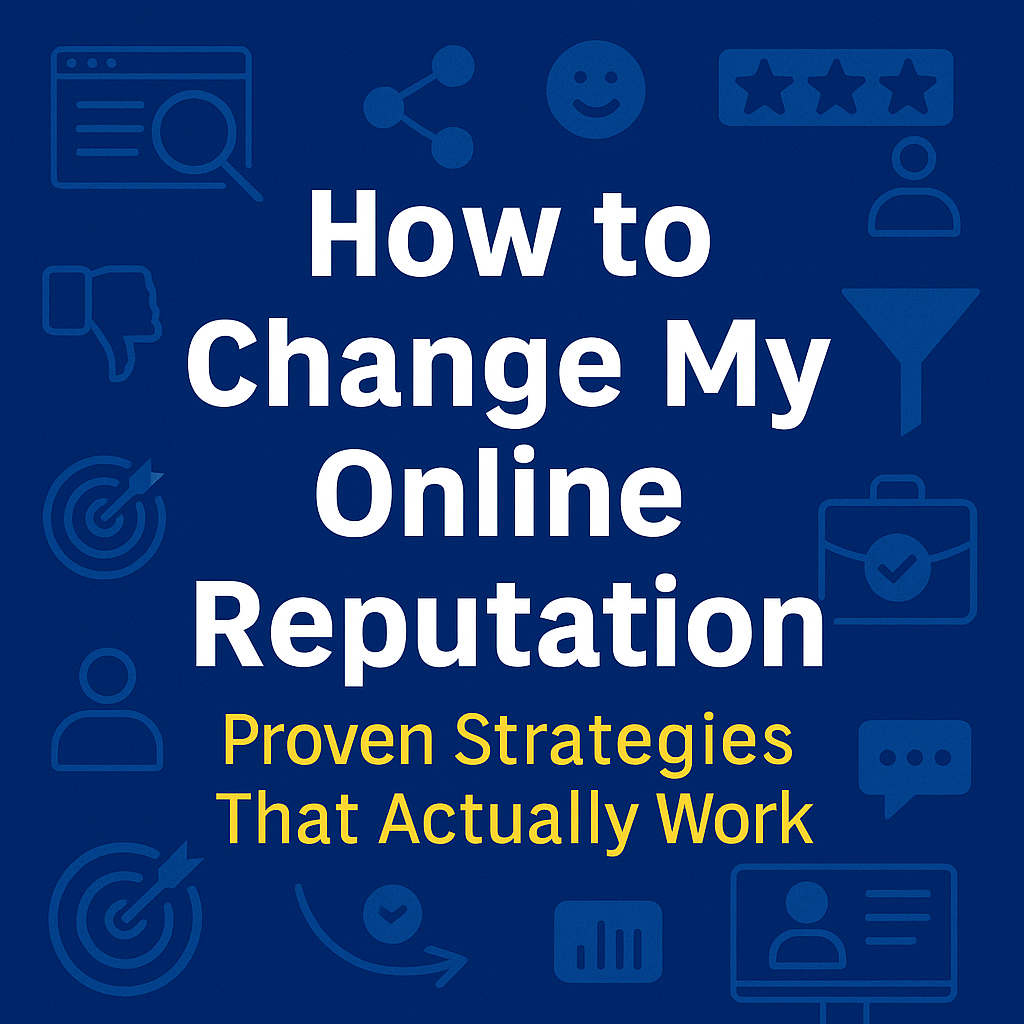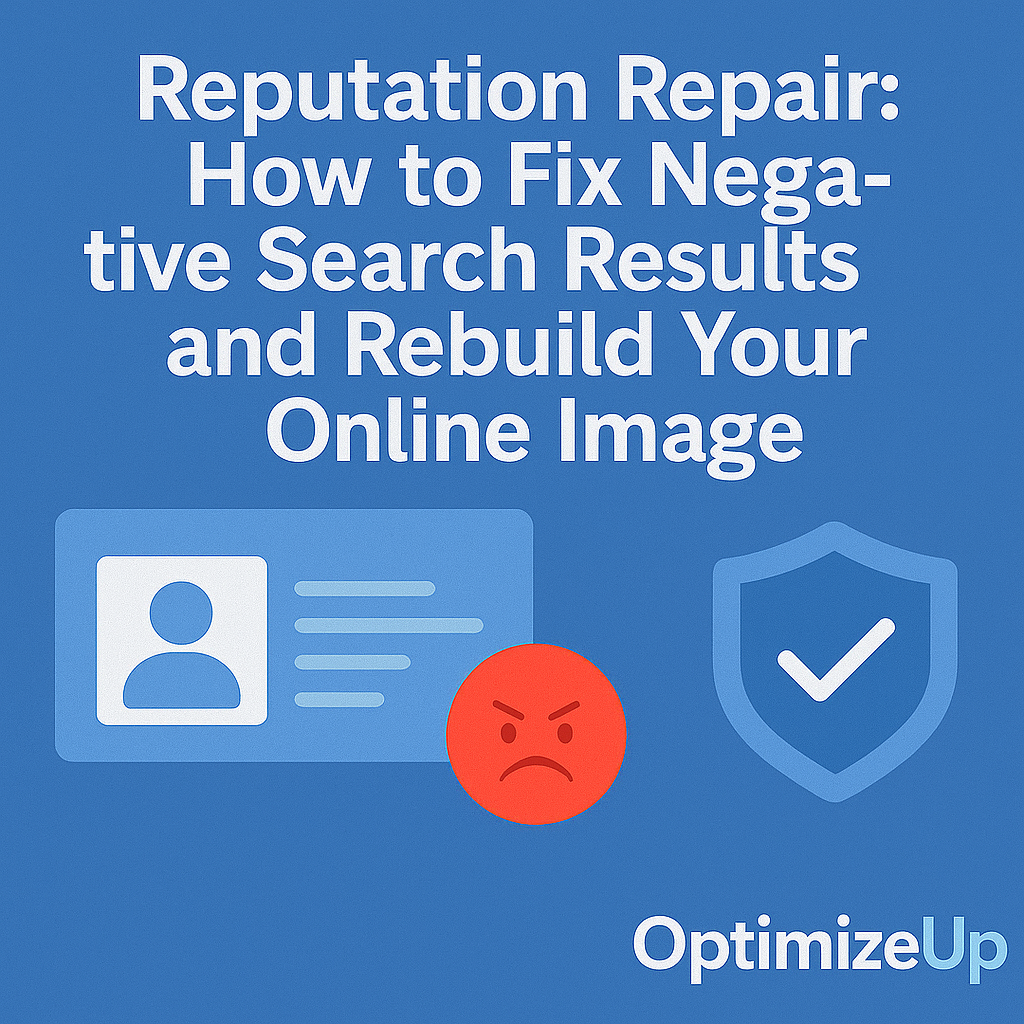A single bad review, news story, or outdated article can damage how you’re perceived online. Whether you’re a professional, entrepreneur, or private individual, you may find yourself asking: “How can I change my online reputation?” The good news is that it’s not only possible—it’s entirely achievable with the right strategy.
In this guide, we walk you through step-by-step tactics to reclaim your online image, clean up damaging content, and build a credible, trustworthy presence across the web.
Why Your Online Reputation Matters
Your online footprint influences:
- Hiring decisions
- Client trust
- Business partnerships
- Romantic relationships
- Legal credibility
Studies show that over 85% of people trust online reviews as much as personal recommendations. That means what Google says about you matters more than what you say about yourself.
A negative reputation can result in lost job opportunities, revenue dips, social scrutiny, or public mistrust. Conversely, a strong online presence can elevate you above competitors, win client confidence, and create valuable networking possibilities.
Step 1: Audit Your Online Presence
Before you can change anything, you need to know what exists.
How to conduct a reputation audit:
- Google your name in Incognito mode
- Check page 1 and page 2 results
- Click on image and news tabs
- Review social media accounts
- Document all negative or outdated mentions
- Examine online reviews across platforms
Tools to assist:
Take screenshots and log every concerning item in a spreadsheet with URLs, platforms, and notes on severity. This data will help you prioritize cleanup efforts.
Step 2: Suppress Negative Search Results
Suppression means pushing negative content off page 1
Search engines prioritize fresh, relevant, and authoritative content. By publishing optimized positive assets, you can outrank unwanted results.
What to create:
- Blog articles on reputable platforms
- Personal or business websites
- Social media updates (LinkedIn, Twitter/X, Instagram)
- Guest posts on high-authority domains
- Video content on YouTube
- Press releases
- Company announcements and publications
Pro Tip:
Use keywords associated with the negative content in your positive posts. This helps Google associate your name with the new content.
Consistency is key—regular publishing increases the likelihood your fresh content will overtake older, negative results.
Step 3: Remove Unwanted Content (Where Possible)
Some content can be removed directly or reported for violation.
Tactics:
- Request deletion from site owners
- Use polite, professional messaging
- Provide reasons (privacy violation, outdated, or harmful content)
- Use legal tools
- DMCA takedown for copyrighted content
- Court orders for defamation or libel
- Privacy rights under GDPR (EU) or CCPA (California)
- File complaints
- Google Removal Tool
- Social media reporting features
- Web host abuse reporting
Use Whois Lookup to find contact details for site administrators if not publicly available.
Step 4: Build a Strong, Authoritative Personal Brand
Reputation isn’t just about cleaning up. It’s about proactively controlling the narrative.
Build a brand that Google trusts:
- Launch a personal website with a custom domain (e.g., YourName.com)
- Fill your About page with awards, credentials, and photos
- Maintain active social profiles with optimized bios and consistent branding
- Publish regularly (articles, videos, updates)
- Get featured in media through press releases and interviews
Use structured data and schema markup to improve your content’s appearance in search results (rich snippets).
Step 5: Leverage High-Authority Platforms
Search engines favor domains with strong authority. Here’s how to use them:
- LinkedIn – Long-form posts and updates
- Medium – Opinion pieces and storytelling
- Crunchbase or About.me – Business bios
- YouTube – Video introductions, testimonials, and tutorials
- Reddit or Quora – Provide helpful answers using your real name (where appropriate)
- Substack – Start a newsletter that Google can index
Backlink your profiles to your website and use your full name across all platforms to create a unified identity.
Step 6: Get Reviews from Real Customers or Clients
Positive reviews can drown out the noise and increase trust.
Review sites to target:
- Google Business Profile
- Yelp
- Trustpilot
- Facebook Reviews
- Better Business Bureau (BBB)
- G2 (for software and tech professionals)
Never use fake reviews. Instead:
- Reach out after successful interactions
- Make it easy (share direct links)
- Automate reminders using CRM tools
Also, respond publicly to all reviews, both good and bad. Show that you are attentive and transparent.
Step 7: Monitor Your Reputation Long-Term
Online reputation isn’t a one-and-done task. It requires ongoing monitoring and response.
Tools for monitoring:
Set up weekly or monthly alerts and perform quarterly audits to spot issues early.
Advanced Tips for Managing a Damaged Reputation
- Create Wikipedia or Wikitia page (if eligible)
- Publish whitepapers, case studies, and expert commentary
- Use podcast guesting to expand reach and build trust
- Participate in community forums under your real name
- Sponsor content or events in your niche
- Contribute to HARO (Help A Reporter Out) to get cited by journalists
FAQ: How to Change My Online Reputation
Yes. With time, strategy, and persistence, it’s possible to remove, suppress, and replace content that harms your reputation.
Depending on your situation, changes may take 30–180 days to reflect in Google. Fast improvements often depend on how much high-authority content you control.
Yes. As long as you don’t use fake identities, reviews, or break defamation laws, all strategies outlined are fully legal.
Avoid:
Hiring black-hat services
Posting fake reviews
Threatening website owners
Ignoring ongoing monitoring
Pricing ranges from DIY (free) to $1,000–$10,000+ depending on how severe the issue is and the scope of work required.
Not necessarily. It can create a vacuum that harmful content fills. A better strategy is to clean and optimize existing accounts.
These are often the most difficult to remove. Work with legal counsel to determine if expungement or sealing is an option. Alternatively, heavy suppression using SEO tactics is recommended.
Can I really change my online reputation?
Yes. With time, strategy, and persistence, it’s possible to remove, suppress, and replace content that harms your reputation.
How long does it take to change online search results?
Depending on your situation, changes may take 30–180 days to reflect in Google. Fast improvements often depend on how much high-authority content you control.
Is reputation management legal?
Yes. As long as you don’t use fake identities, reviews, or break defamation laws, all strategies outlined are fully legal.
What should I avoid when trying to fix my online reputation?
Avoid:
- Hiring black-hat services
- Posting fake reviews
- Threatening website owners
- Ignoring ongoing monitoring
How much does it cost to fix your online reputation?
Pricing ranges from DIY (free) to $1,000–$10,000+ depending on how severe the issue is and the scope of work required.
Will deleting social media accounts help?
Not necessarily. It can create a vacuum that harmful content fills. A better strategy is to clean and optimize existing accounts.
What if the negative content is on a government or legal site?
These are often the most difficult to remove. Work with legal counsel to determine if expungement or sealing is an option. Alternatively, heavy suppression using SEO tactics is recommended.
Can I hire someone to manage all of this for me?
Absolutely. Professional online reputation consultants like Optimized Up can audit, build, suppress, and protect your online identity using proven methods tailored to your situation.





